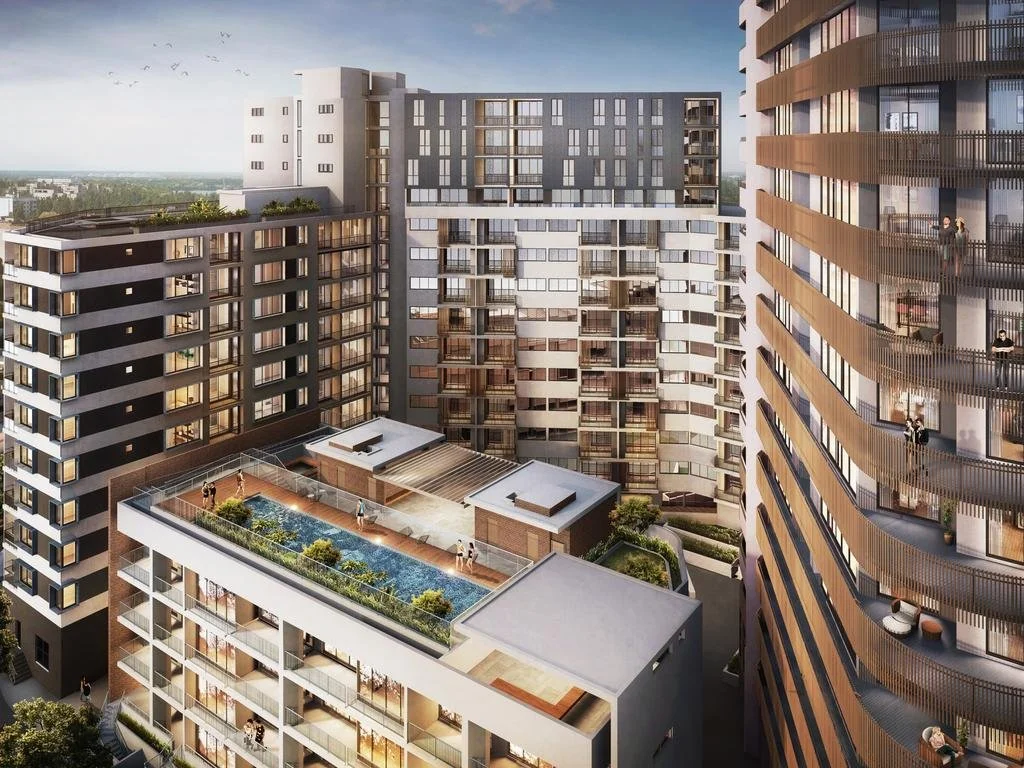8 Ways To Better Housing In Sydney
March 2024 | Printed in The Fifth Estate
Photo: Bjanka Kadic
With house prices and rents continuing to soar, young Sydneysiders are feeling justifiably cornered. A solid plan that both combats housing affordability whilst also respecting the core elements of Sydney that locals love, is needed. However, the government’s current plan ostensibly will not achieve either.
As a layman on this issue, I wrote a comment piece about it last year. Having immersed myself in material and conversation on this debate ever since, I’ve realised just how much there is to learn. Key themes emerge. These are my eight recommendations on how to tackle affordability in a way that is also better for long-term Sydney.
1. Remain Independent:
Planning for Greater Sydney needs to remain independent of the elected government. Otherwise, decision making will be influenced by the omnipresent pursuit of re-election and the chasing of votes.
An independent body will also reduce the influence of self-interested lobby groups and the sway of political donations.
It seems a better model is needed than the dismantled Greater Sydney Commission. Once designed and agreed upon, it should be enshrined in the Constitution of NSW via an Act of Parliament.
2. Strategic Planning
We need a long-term mindset, not a short-term one. NSW election cycles are four years. Plans made by one government can be thrown out by the next. This not only wastes time and money. It keeps Sydney hobbling along with band-aid solutions.
Premier Minns’ current plan has been cobbled together in less than 9 months. This is city planning on the fly. Strategic plans take time and need to evolve continually.
Plans should also be evidence-based, expert-led and driven by sophisticated modeling. Affordable housing quotas should be dictated by data – not by haggling at the bargaining table.
3. Genuine Collaboration
Our built-environment industry is leading edge. This ecosystem of planners, architects, builders etc. seethes with an incredible amount of experience and expertise.
Local government, despite the smears, also employs some of our brightest built-environment minds and talent. Councils are also the ones that know their communities best.
However, these stakeholders have had little input into the proposals. This is a massive missed opportunity to create better outcomes for Sydney. Meanwhile, records show the developer industry has been heavily consulted.
4. Multifaceted Approach
Most experts now say that there is no affordability salvation down the singular path of “more supply”, even if it does make for a strong slogan and compelling headline.
Infill development along key transport corridors is encouraged by most pundits. However, most academics advocate a multi-pronged housing affordability strategy – something we’re yet to see.
Other prongs supported include: social housing; build-to-rent options; empty-dwelling reform; AirBNB reform; negative gearing reform; overseas investor reform; rental price caps; adaptive reuse of commercial space; immigration policy review.
5. Density Done Right
Personally, I prefer my cities dense. The rattle and hum of places like London and Paris make for exciting places to live. However, for density to work – it must be done right and not done slap dash.
More density means more people in the same space. So, common sense says adequate amenities and infrastructure need to be in place or planned for. Think: transport, outdoor space, schools, traffic, parking, sewage.
The current plans bypass this reality. My name for it is “Hail Mary density”. That is: cross your fingers, close your eyes and pray it will somehow work. This is not good enough and a potential disaster for Sydney’s liveability.
6. Importance of Place
Sydney’s diverse collection of villages is one of our most valuable assets. Each has their own sense of place, character and story. Even villages right next door to each other can be idiosyncratically different.
This personality distills into our built environment, including via those buildings we consider part of our heritage. Fundamental ingredients in our city’s fabric and essence, not to mention being invaluable to our brand.
However, the “one size fits all” changes proposed will run roughshod over the top of all this. These plans reward homogeneity, encourage the cookie cutter and ignore the identity of “place”.
7. Design Excellence
Sydney is world famous for its beauty. However, it’s about to undergo a facelift. Rather than holding our breath to see if it will emerge disfigured – we need a commitment from our leaders to design excellence.
We should be striving to become a residential, architectural Mecca. A bastion of sustainable architecture and development. A benchmark of world-class design meets liveable density.
With the right leadership too, NSW should be positioned as the world leader in big city upgrades. Knowledge and expertise for hire when other worlds cities confront these same affordability challenges.
8. Reform & Trust
There is deep public distrust of the relationship between our political class and the developer lobby. There is also distrust of the quality of dwellings being built. Governments will struggle to sell-in plans until this trust is rebuilt.
Therefore, a Royal Commission investigating the relationship between NSW Planning and the developer lobby, is needed. This will identify issues to be rectified so that trust can be reinstalled.
Finally, the revolving door between Parliament and the “big end of town” needs to be reeled in. Cooling off periods – the window of time when retiring politicians can take up jobs with lobbyists – should be extended.






